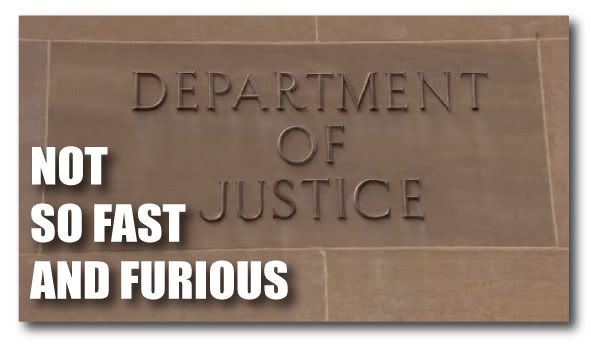Blogger's note: This quick follow up to "Cat Killer Vet Drops a Dime"
was triggered by receipt of responses from the vet involved
and a bucket of hate-mail and sundry accusations from persons
who either can't read or choose not to. But a promise is a promise. [see below]
When it comes down to the legalities--and the jail time--who makes the call? Judges? Juries? or veterinarians in private practice?was triggered by receipt of responses from the vet involved
and a bucket of hate-mail and sundry accusations from persons
who either can't read or choose not to. But a promise is a promise. [see below]
Persons associated with private, not for profit corporations operating in the public sector and doing their damnedest to look just like public servants are nothing new in New York. Particularly in the field of animal law.
But the cautionary tale published by the Albany Times-Union of Gerard Sagliocca, his sister and the cat is a whole 'nother thing.
I'm hoping every reader will carefully consider the implications of a case in which a veterinarian in private practice reported her client -- who had not beaten, starved, overdriven, overworked, nor abandoned a pet -- for cruelty to animals after he brought a cat to her clinic.
In published comments, this particular vet stated that she believes her client should go to jail, and eventually elaborated that. . .
". . .the failure to provide any care to companion animals until they are too close to death to save them constitutes cruelty in NY State" --Holly Cheever, DVM, in comments published via the Albany Times-Union blog.
I am the Lord thy Veterinarian

Pretty interesting stuff, isn't it? Fascinating, even. But I'm still not sure I see the logic.
Does the above mean that only people who are confident their animals are healthy should dare to take them to a vet, since no one wants to be charged with cruelty to animals?
Sooner or later 100% of animals are "too close to death to save." How much "care" and how far in advance would be necessary to avoid prosecution? Who determines that?
If a pet has a heart attack or suffers some other sudden and acute illness or injury and dies without veterinary care, would that be a "cruelty to animals" ?
Are the only permissable deaths those involving a vet ? Where does the owner's beliefs and wishes come in ? What about people who don't believe in euthanasia?
 How the hell are pet owners even supposed to know how sick their pet is, unless they've taken him or her to a vet?
How the hell are pet owners even supposed to know how sick their pet is, unless they've taken him or her to a vet? What if the vet is wrong? What if the vet isn't up-to-date on the latest treatments?
What if the vet is a lunatic animal rights freak? (Hey, I'm just saying. . .)
The possibilities are endless.
Does the State of New York really want to go there?
Did the State of New York go there already?
Mostly, of course: what happens if pet owners fear their veterinarians?
I believe we're looking at a recipe for increased pet abandonment and even more needless suffering, for both pets and their owners. And I've got a problem with that.
Ask a silly question
Last week, I challenged readers to point out to me where, under current New York state law, an animal can be seized and euthanized contrary to his owner's wishes, without a court order, without a hearing, and without any of that other stolid due process-type goodness.
Someone quoted AML 371 "The powers of peace officers."
Close, but no cigar. OK, not even that close.
The plain language of AML 371 allows officers to "lawfully interfere to prevent the perpetration of any act of cruelty upon any animal in his presence." Like someone taking a baseball bat to a pony with a cop standing right there to see it.
But if peace officers enter a private home without first obtaining a proper warrant signed by a judge -- thereby raising the spectre of an illegal search and seizure -- we could be in fruit of the poisonous tree territory. All bets are [supposed to be] off if the search is illegal. The evidence gets tossed.
Am I the only one still watching Law and Order re-runs ? Sam Waterston would have had a cop's butt in a sling for jeopardizing his case through failure to get a warrant. Think Bill of Rights, the right to be secure in our homes from unreasonable searches, the ACLU, your 9th grade civics class . . .
Furthermore, "lawfully interfering" is hardly a license to kill. Impounded animals, even when seized legally with a signed warrant, are not automatically forfeited. Those animals belong to their owners.
Finally, does a cat dying at home [as opposed to being euthanized in a vet's clinic, for example] qualify as an "act of cruelty"? Says who?
Remember, I'm not talking personal preferences and opinions here. I'm talking about law which must be understandable, reasonable and accessible enough for people to comply with, and potential criminal charges that could send someone to jail for a year. And I'm thinking that AML 371 just doesn't work.
What the vet said, and Blue Dog's Choice
As noted at the end of "Cat Killer Vet Drops a Dime" I also received a series of responses from Holly Cheever, the veterinarian who filed a cruelty complaint against Gerard Sagliocca after he left her clinic with a live cat. Cheever's comments presented me with a dilemma not remotely on the order of Styron's novel and the movie it inspired.
To paraphrase some of my favorite cat people, Cheever can always git her own damn blog. But that crude thought was undoubtedly a product of my insensitivity and an ethical compass which compares unfavorably to a Swiss Brown cow's.
How to post Cheever's comments without further muddying murky waters? Hmmmm.
Blue Dog's choice was to do this small follow up piece and link up Cheever's comments for those interested. And then be sure to get the first licks in, because I'm not pretending to be unbiased and I'm not coy about where my sympathies lie.
Each and every time, this blogger comes down in favor of the preservation of civil rights and in support of the rule of law, regardless of the allegations. Every. Freaking. Time.
So, readers, please keep in mind:
- AML 350(2): "'Torture" or "cruelty" includes every act, omission, or neglect, whereby unjustifiable physical pain, suffering or death is caused or permitted.' This cat was FIV+ when he was adopted, and Cheever says he had developed cancer. These illnesses were not caused by the Saglioccas. Was the cat in pain? How would they have known? Did the Saglioccas intend for the cat to suffer? If so, why take the cat to a clinic? Every day, in veterinary clinics everywhere, animal owners learn for the first time that their pets are seriously ill and may be suffering. With limitations like "unjustifiable" and "caused or permitted" in the New York statutes, I believe that the meaning and relevance of AML 350(2) to cases like Saglioccas' are, at the very best, highly questionable.
- AML 371 does not make law enforcement's job "to follow up on complaints as they see fit." It allows officers to "issue an appearance ticket pursuant to section 150.20 of the criminal procedure law, summon or arrest, and bring before a court or magistrate having jurisdiction, any person offending against any of the provisions of article twenty-six of the agriculture and markets law." Seizing cats and killing them over their owners' objections? I don't see that mentioned. Does anyone else? [Note: the balance of AML 371 regarding "acts of cruelty in an officer's presence" was covered above.]
- AML 373: "It was their decision to bring the cat back for me to end his suffering in a humane manner, and #373 gives them the right to do so." Well, I can only hope that isn't what happened, and Cheever doesn't specify which part of AML 373 she is referring to. 373 is a massive section of NYS Agriculture and Markets law allowing many things, including seizure of animals with a warrant, forfeiture and destruction of animals forfeited prior to adjudication of charges. Such permitted destruction would be after arraignment, after a security bond hearing, after the owner fails to pay an amount specified by the court as a security bond and after the court orders the animal forfeited. In short, after all kinds of things that did not happen in this case.
- "Richard's" team and libel: First of all, I don't know who "Richard" is. As for the veiled threat of a libel suit: telling the truth is by far the best defense against libel allegations.







